Eccles, Scottish Borders
400MW/800MWh Battery Storage Project
Zenobē has commenced construction of the Eccles Battery Energy Storage System, marking a significant milestone in our investment portfolio in Scotland. Located near Eccles Substation, the site is expected to enter commercial operation in June 2026
Part of our £750m portfolio of battery energy storage systems in Scotland
Zenobē designs, finances, builds, owns and operates battery energy storage systems (BESS). We help grid operators overcome the challenges in balancing supply and demand and overcoming power stability and constraints as we transition away from fossil fuels towards net zero.
By 2027, Zenobē is on track to deliver 1.2GW of battery power, which will make us one of the largest owners and operators of battery storage in the UK.
400MW /
800MWh
battery to reduce wasted wind energy
2026
site is expected to go into operation
4th site
of £750m portfolio to go into construction
Project description
Our site sits on 20 acres (8 hectares) of agricultural land located approximately 500m south of Eccles Substation in the administrative area of Scottish Borders Council.
The development comprises the construction and operation of a battery storage scheme, with a total capacity of 400 MW. The principal components of the development include:
- 216 Battery Energy Storage units, each one approximately 16.6m x 3.7m x 3.5m in size, housing the battery blocks, inverters, heating, ventilation and transformers
- Three high voltage supergrid transformers, associated switch gear and enclosure walls
- Up to four medium voltage switch rooms, four spares containers and a control room each approximately the size of a shipping container
- Columns for the infrared security lights and CCTV system up to 6m in height
- Ten low voltage switch rooms and auxiliary transformers each approximately 8.8m x 3.5m x 3.5m
- Internal access tracks approximately 5m in width
- Underground cables to connect to the substation
- A perimeter metal palisade fence 2.4m high
- Landscape planting and biodiversity enhancement measures
Project programme
The programme below highlights the main stages in the construction process through to the site becoming fully operational.
Access formation
The formation of the access includes the development of the site access off the A697, tree felling and the upgrade of approximately 400m of access track through the forest plantation to the BESS site. The access formation is expected to start later this year and take three months to complete.
Main site enabling works
Once the access is formed, the enabling works on the BESS site will commence. This will include the installation of temporary drainage and silt traps near watercourses, the installation of a construction compound comprising of welfare units, offices and car parking. This period of works will also include the installation of temporary security fencing and CCTV cameras around the permitter of the site and the installation of wheel wash facilities. This work is due to commence in January 2025 and is expected to take one month to complete.
Earthworks
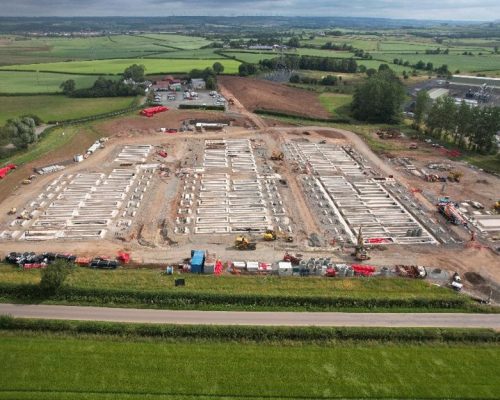
Zenobē’s BESS site in Kilmarnock South, Scotland
Earthworks activities included the clearing of vegetation and topsoil, excavation and reshaping of subsoil to create a gentle slope onto which aggregate is placed to create a level development platform to support the batteries and other equipment.
The earthworks is the most traffic-intensive phase of construction due to the volume of aggregate that will be brought into the site from local quarries to create the platform. Our design ensures all excavate material will be kept on site and used to form the development platform and any surplus material will be used to reprofile the land around the site to provide additional screening.
The earthworks are due to commence in January 2025 and are expected to take six months to complete.
Civil works including laying of foundations, permanent drainage and cable ducts
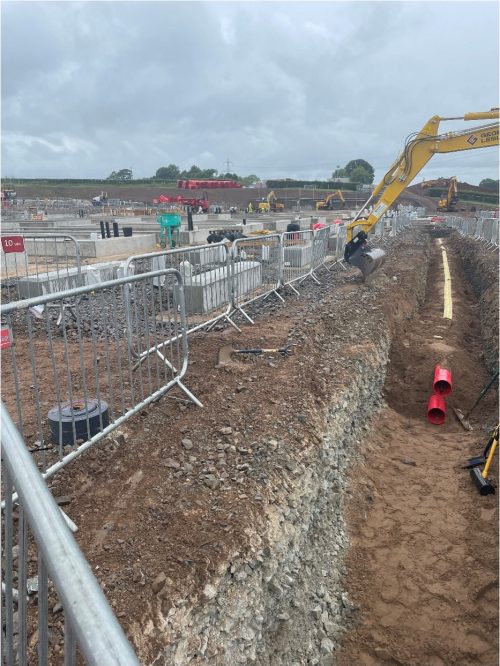
Zenobē’s BESS site in Kilmarnock South, Scotland
The civils phase comprises of the installation of foundations, permanent drainage infrastructure and cable trenches and installation of the cable which connects the battery site to Eccles Substation.
The components of the battery energy storage system will be installed on concrete foundations. Some of the foundations will be cast in-situ which will require ready-mixed concrete to be delivered to site using mixer vehicles.
Other foundations will be pre-fabricated and will be delivered to site via HGV and simply lifted into position with a crane.
During this phase the permanent drainage system will be installed across the site. This will comprise of the installation of trenches and pipes and the creation of an attenuation pond to collect surface water run-off.
The cable which connects the battery site to the Eccles substation will be installed by a combination of open-trench excavation and horizontal directional drilling (HDD).
The civils works are expected to start in April 2025 and are expected to take six months to complete.
Equipment installation
Delivery and installation of the batteries units and other electrical equipment are expected to start in September 2025 and will be spread out over six months. The batteries and other equipment will be delivered to site using HGVs and will be craned into position and installed on the foundations.
Permanent fencing will be installed during this phase and some of the landscape planting will be undertaken in this time. We expect there will be a maximum of approximately 20 deliveries per day over this six-month period.
Abnormal load deliveries
While most plant and equipment will be delivered to site using standard HGVs, the three high voltage super grid transformers and the four medium voltage switch rooms are classed as abnormal loads and will be delivered to site using special order delivery vehicles under police escort. We are working with Scottish Borders Council to ensure the abnormal loads are delivered to site safely and with minimal disruption to other road users.
The transformers and switch rooms are due to be delivered to site in November / December 2025. The exact times and dates of the abnormal load deliveries will be posted on this website when confirmed.
Commissioning and energisation
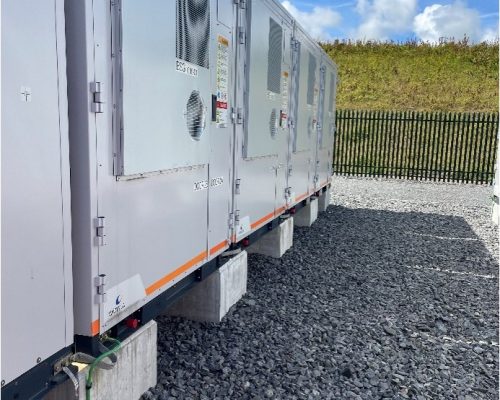
Zenobē’s BESS site in Blackhillock, Scotland
Once the equipment has been installed on-site there follows an extensive period of connecting the equipment together and testing it to ensure it complies with all protocols and policies and operates as planned.
The commissioning phase is expected to take approximately six months, commencing in December 2025. Once commissioning is complete, the facility will be energised in May 2026 and will enter commercial operation.
Most of the traffic during the commissioning and energisation phase will involve cars and vans with the occasional light or heavy goods vehicle.
Once the site is energised, the temporary construction compound equipment will be decommissioned and all remaining construction equipment and material will be removed from the site.
Operation
The Eccles BESS will deliver essential services to run the UK’s electricity network more efficiently for the next 40 years.
The operational maintenance requirements are very low so there will be minimal vehicle movements to and from the site once construction is complete and the site is fully operational.
After 40 years, the Eccles BESS will be decommissioned, all equipment will be removed from site and the land will be restored.
Community benefit
We are developing a community benefit fund. We will engage with local community groups to determine how it will be managed and distributed.
Who are Zenobē?
Zenobē designs, builds and operates battery energy storage systems (BESS) that maximise the uptake of renewable power, ensuring it does not go to waste and can power our homes and our transport.
Founded in the UK in 2017, we will deliver 1.2GW worth of battery storage projects by 2026.
We’re investing £750m into the Scottish electricity transmission network over the next three years, to 2026. These sites will save more than 1 billion tonnes of CO2, over their 15 years of operation.
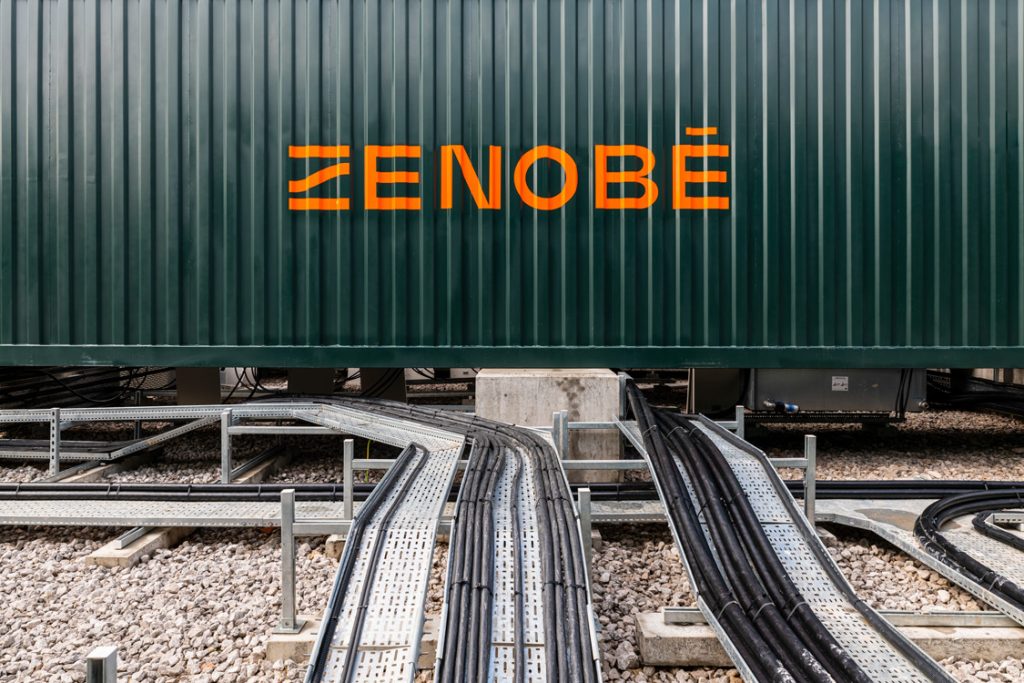
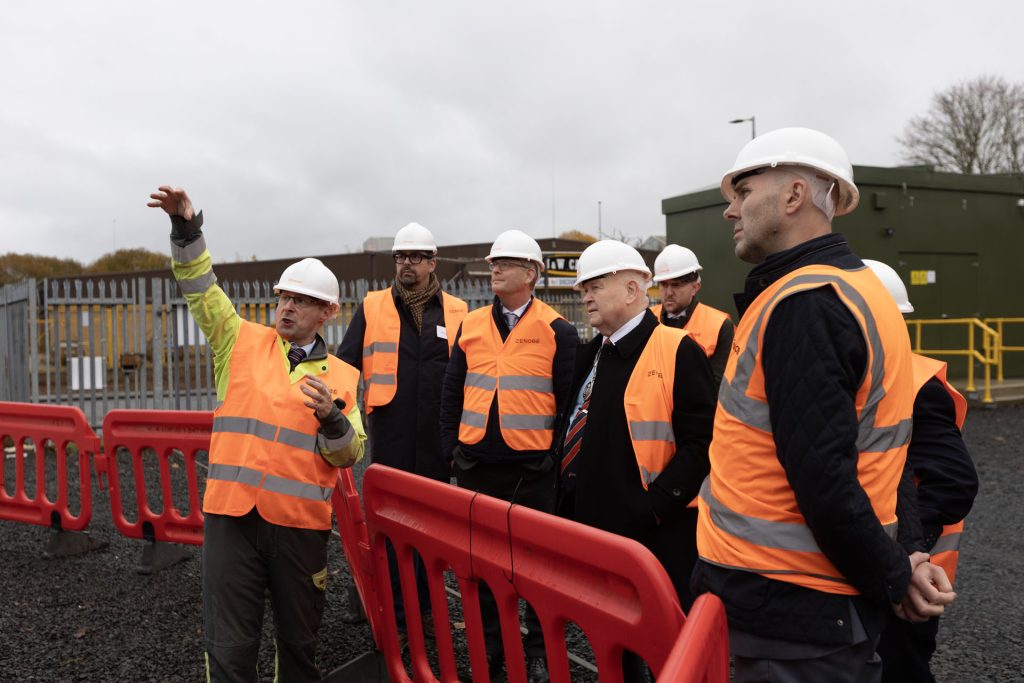
Scotland's commitment to net-zero
The Scottish and UK Governments have made a legal commitment to cut carbon emissions to net-zero. With the move away from fossil fuels, the demand for electricity will increase with the need to electrify transport, heating and more.
Battery storage plays a key role in helping the UK meet its net zero ambitions as it allows a greater amount of cheap renewable energy to be deployed whilst providing critical balancing and stability services without the need for traditional fossil power stations.
What is a grid-scale battery and what does it do?
Renewable energy is intermittent which means at any time there is a risk of it generating too much or too little in relation to demand from homes, businesses and transport.
Batteries provide ‘flexibility’ and the ability to balance the fluctuating supply and demand on the electricity system which comes with increased deployment of renewable and decentralised energy generation. For example, if wind turbines are generating more power than demand allows, batteries store this surplus energy. When wind generation is low but demand is high, battery operators release the stored electricity back into the system, ensuring this energy is not wasted.
Batteries also provide a wide range of additional services needed to maintain grid stability and keep the lights on. Our batteries have been the first in the world to provide fast reserve, to be used for reactive power and to manage grid constraints on the transmission network.
Our bespoke solutions range from ancillary, balancing and wholesale trading, to providing inertia, short circuit level, and voltage management.
Zenobē also provides non-wire alternative solutions that reduce or eliminate expensive network reinforcement costs. These are specific solutions that are essential to a decarbonised electricity system.
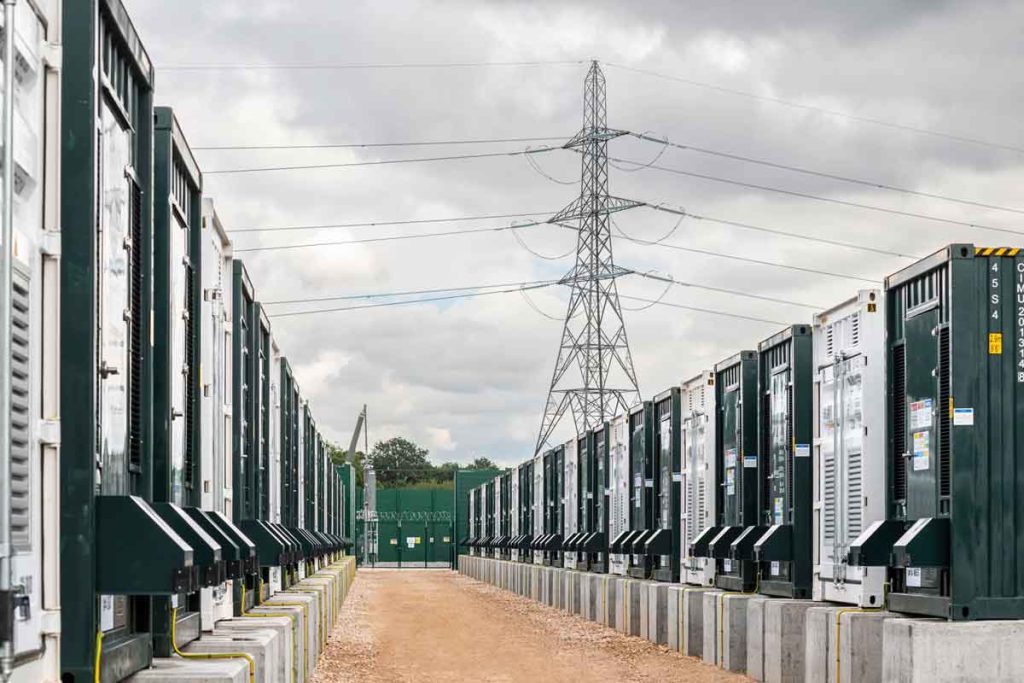
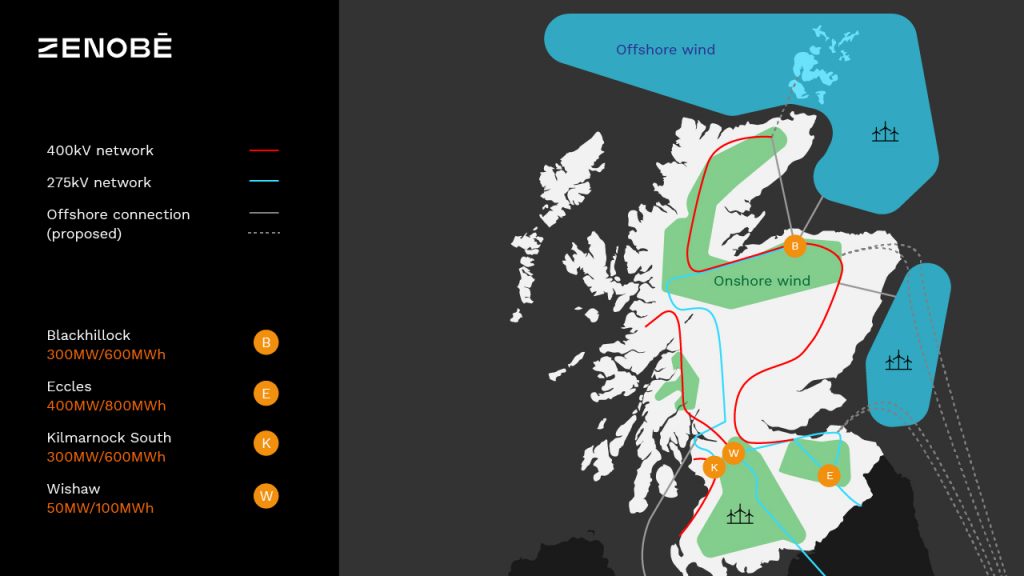
Why Eccles?
Eccles substation is part of the 400kV electricity network responsible for transmitting renewable energy generated in Scotland to other parts of the UK where demand is greatest. The substation was identified by the National Grid Electricity System Operator (NGESO) as one of several strategic locations on the transmission network that required critical stability services. Zenobē secured the long-term contract with NGESO to provide these critical services at Eccles.
Without storage schemes like our Eccles project, offshore and onshore wind and other renewable energy will be severely curtailed in the second half of this decade and fossil fuelled power stations will be called upon to deliver stability services. As such, battery schemes like Eccles are classified as Critical National Priority Infrastructure by the UK Government.
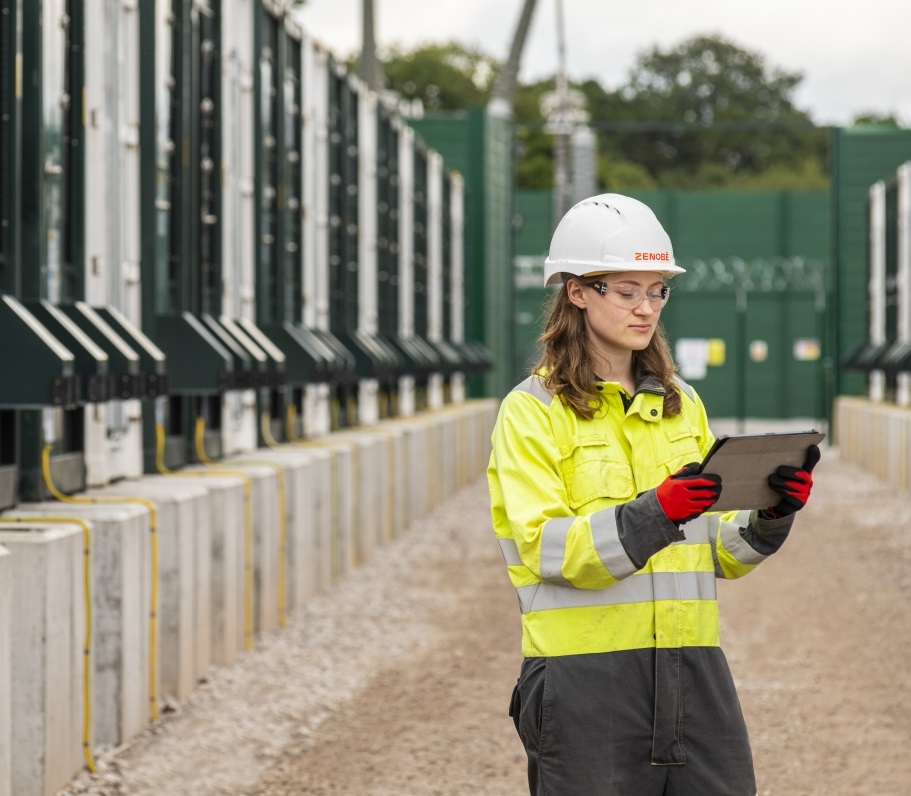
Do you have any questions?
If you have any questions about our battery energy storage system in development in Eccles, Berwickshire contact our project management team via email Eccles project team: contact.eccles@zenobe.com
If you cannot find the document you are looking for, get in touch with our project development team by emailing ukprojects@zenobe.com
